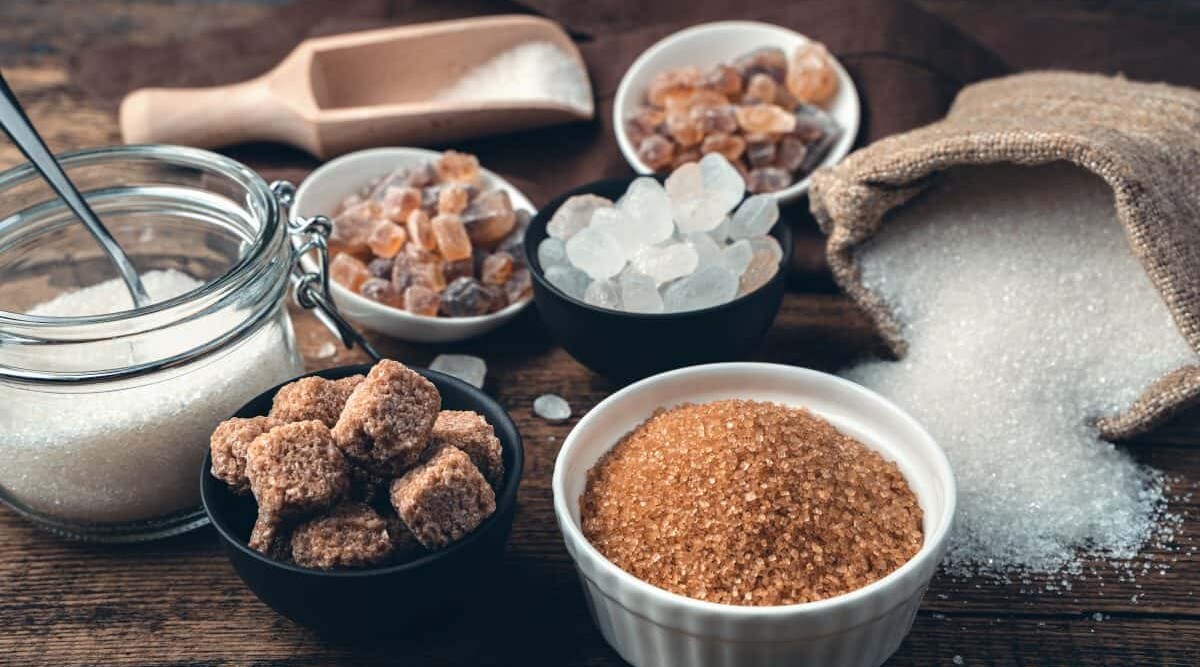
Are you confused about the many different types of sugar? If so, read on to learn about the many varieties and how to use them correctly in your cooking.
With a history stretching back several millennia, humans have had plenty of time to develop a wide range of sugars and sugar products. There are so many kinds of sugars, choosing the right one for the job can be confusing.
To simplify your life, we’ve compiled a sweet selection of information about 15 kinds of sugar, including what they look like, where they come from, what they taste like, and what you can do with them.
We’ll close out with a quick round-up of which varieties you should always have in your pantry and suitable substitutes when you’re in a pinch and don’t have time to run to the store.
Jump to:
- 1 At a Glance Comparison Table of 15 Types of Sugar
- 2 My Advice for Sugar in BBQ Rubs
- 3 The 15 Most Common Types of Sugar in Detail
- 3.1 White Granulated Sugar
- 3.2 Powdered Sugar/Confectioners Sugar
- 3.3 Fruit Sugar
- 3.4 Cane Sugar
- 3.5 Bakers Sugar/Caster Sugar
- 3.6 Coarse Sugar
- 3.7 Sanding Sugar
- 3.8 Light Brown Sugar/Golden Sugar/Golden Yellow Sugar
- 3.9 Dark Brown Sugar
- 3.10 Turbinado Sugar
- 3.11 Muscovado Sugar
- 3.12 Demerara Sugar
- 3.13 Granulated Brown Sugar
- 3.14 Sugar Syrup — Simple Syrup
- 3.15 Invert Sugar
- 4 Sugars We Recommend Every Chef Stock and Why
- 5 Sugar Substitutions
- 6 Make Your Own Brown Sugar
- 7 Final Thoughts
At a Glance Comparison Table of 15 Types of Sugar
Here’s an at a glance comparison table of 14 different types of salt, giving their name, where they come from, their distinct flavor profile and uses, and relative cost compared to one another.
| Type of Sugar | Origins and Composition | Flavor and Uses | Relative Cost |
|---|---|---|---|
| White Granulated Sugar | Refined from sugarcane or sugar beets; pure sucrose. | Neutral sweet flavor; used in baking, cooking, sweetening drinks. | Standard; most affordable |
| Powdered Sugar/Confectioners Sugar | Ground granulated sugar with added cornstarch. | Smooth texture; used in icings, confections, dusting. | Slightly higher than white granulated sugar |
| Fruit Sugar | Finer crystals than granulated sugar; from fruits. | Quick dissolving; used in dry mixes, beverages, jellies. | Similar to white granulated sugar |
| Cane Sugar | Made specifically from sugarcane. | Slightly richer flavor; used similarly to white sugar. | Slightly higher than white granulated sugar |
| Bakers Sugar/Caster Sugar | Finer than granulated sugar but not powdered. | Dissolves quickly; used in meringues, fine cakes, and mousses. | Higher than white granulated sugar |
| Coarse Sugar | Larger crystals than granulated sugar. | Crunchy texture; used as a topping for baked goods, decorations. | Similar to white granulated sugar |
| Sanding Sugar | Large crystals; often colored. | Does not dissolve easily; used for decorating cookies, cakes. | Higher than white granulated sugar |
| Light Brown Sugar/Golden Sugar | Granulated sugar with molasses. | Mild caramel flavor; used in baking, sauces, marinades. | Slightly higher than white granulated sugar |
| Dark Brown Sugar | Granulated sugar with a higher amount of molasses. | Rich, deep flavor with hints of toffee; used in rich baked goods, sauces. | Slightly higher than light brown sugar |
| Turbinado Sugar | Partially refined, with a light molasses flavor. | Slightly caramel flavor; used in beverages, baking, as a topping. | Higher than white granulated sugar |
| Muscovado Sugar | Unrefined or partially refined with strong molasses. | Strong flavor; used in savory dishes, rich desserts, marinades. | Higher than most sugars |
| Demerara Sugar | Large, pale golden crystals, partially refined. | Crunchy texture, subtle molasses flavor; used in baking, sweetening beverages. | Higher than white granulated sugar |
| Granulated Brown Sugar | Refined to be granular like white sugar, with molasses. | Similar to brown sugar; used interchangeably in recipes for a milder flavor. | Comparable to brown sugars |
| Sugar Syrup — Simple Syrup | Dissolved white sugar in water. | Neutral sweet flavor; used in beverages, moistening cakes, confections. | Depends on preparation |
| Invert Sugar | Split sucrose into glucose and fructose. | Sweeter and retains moisture better; used in industrial food production. | Higher; mostly used in commercial situations |
My Advice for Sugar in BBQ Rubs
The best type of sugar to use in BBQ dry rubs is often a matter of personal preference and the specific flavor profile you’re aiming for. However, my favorite choice is brown sugar, either light or dark, due to the rich, caramel-like sweetness which complements the savory and spicy flavors typically found in BBQ rubs.
So in this order, I use:
- Brown Sugar (Light or Dark): It adds a nice balance of sweetness with a hint of molasses flavor. Light brown sugar gives a more subtle molasses taste, while dark brown sugar offers a deeper, more pronounced molasses flavor. The moisture in brown sugar also helps the rub to adhere better to the meat.
- Turbinado Sugar: Also a good choice, it has large, coarse crystals and a light molasses flavor. It’s less processed than brown or white sugars and can add a nice crunch and texture to the crust of the meat.
- Granulated White Sugar: Sometimes used for a more straightforward sweet flavor without the molasses undertones, though it lacks the depth of flavor that brown sugar provides. I use white granulated when I want simple sweetness, and a sugar to help bark formation without adding much flavor.
Each type of sugar can impact the final taste and texture of the meat differently. Brown sugar, with its moistness and flavor depth, is my preferred sugar for creating a nice caramelized crust (or bark) on meat during cooking, enhancing the overall BBQ experience.
The 15 Most Common Types of Sugar in Detail
There are only two main sources of commercially available sugar: sugar cane and sugar beets. Sugar cane is a tropical plant native to Southeast Asia but now grown around the world. Sugar beets grow in temperate climates, including Europe and across the middle of North America in both Canada and the United States.
How the cane or beets are processed determines what kind of sugar is produced. Let’s run through the whole gamut of sweetness.
White Granulated Sugar
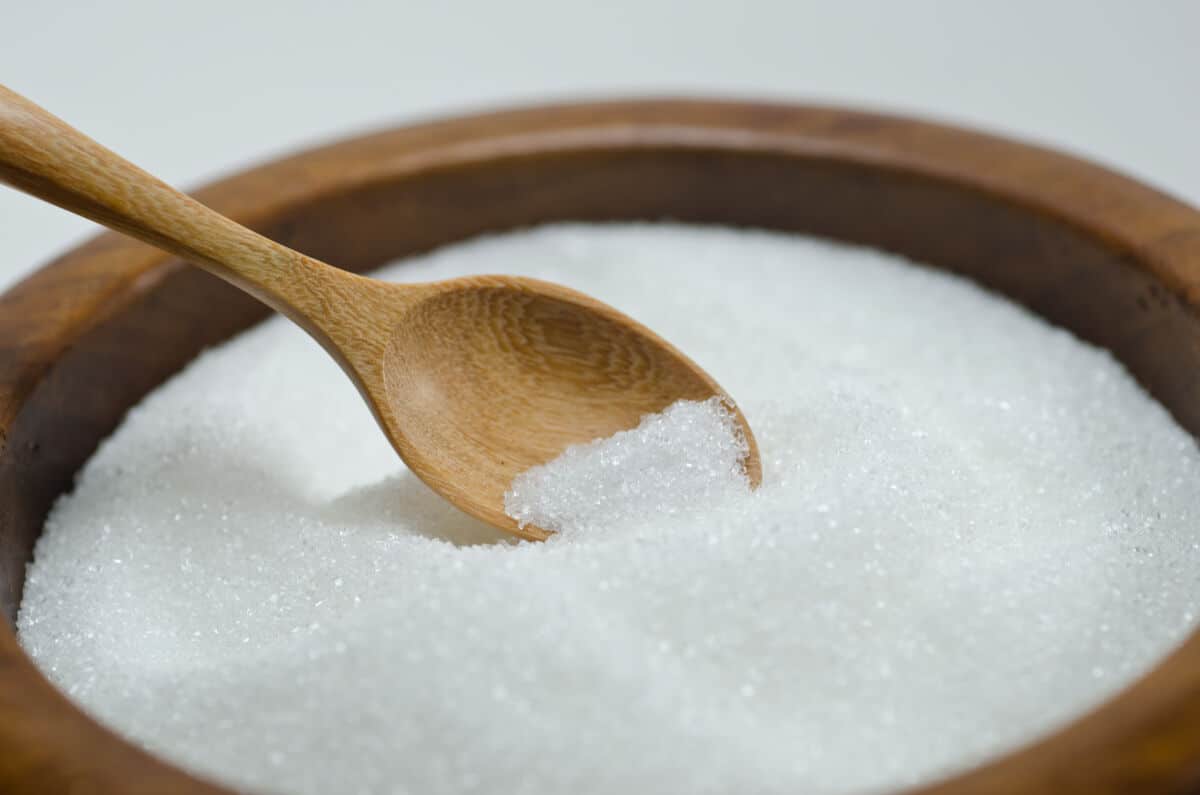
White granulated sugar is comprised of small, uniformly sized crystals; white and sparkly, it’s the standard sugar for everyday use.
Origins and Composition: Pure crystallized sucrose from either cane or beets. This is what’s left after all the impurities and by-products are removed during the refining process.
Flavor and Uses: It’s light and sweet but low on what you’d call “flavor.” White sugar, also known as refined or table sugar, is the most versatile of all sugars, with a wide range of uses. Of course, it’s the go-to for sweetening coffee, tea, and powdered drink mixes. It’s also popular for baking, adding sweetness but allowing other ingredients to create the flavor profile.
Powdered Sugar/Confectioners Sugar
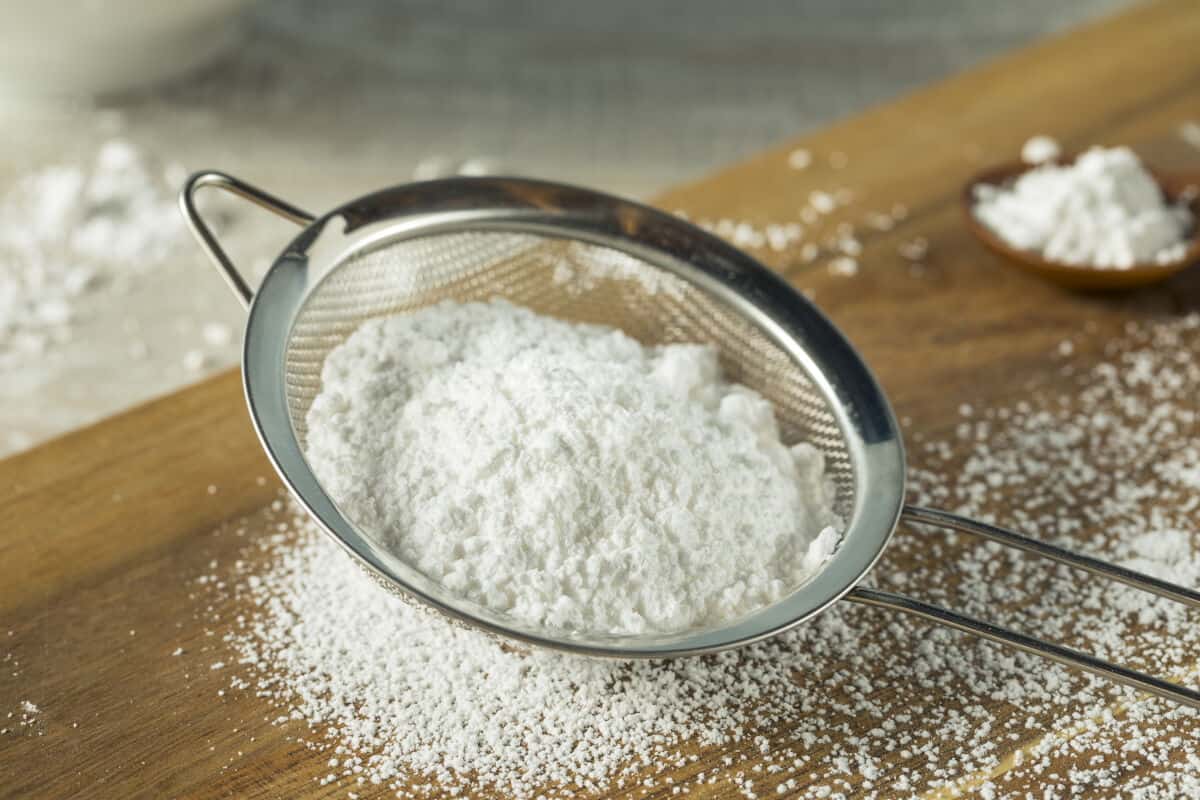
Powdered sugar, also known as confectioners sugar, has a very fine, powdery texture, is white and fluffy, and is often dusted on desserts and used in icings.
Origins and Composition: A blend of white cane or beet sugar ground into a fine powder and corn starch (to prevent clumping).
Flavor and Uses: Sweet but virtually weightless, it takes a lot of it to register on your taste buds. It’s the sugar of choice for making icing and frosting because it dissolves readily. It’s often used as a topping for baked treats like donuts and loaves or cakes that aren’t frosted.
Fruit Sugar
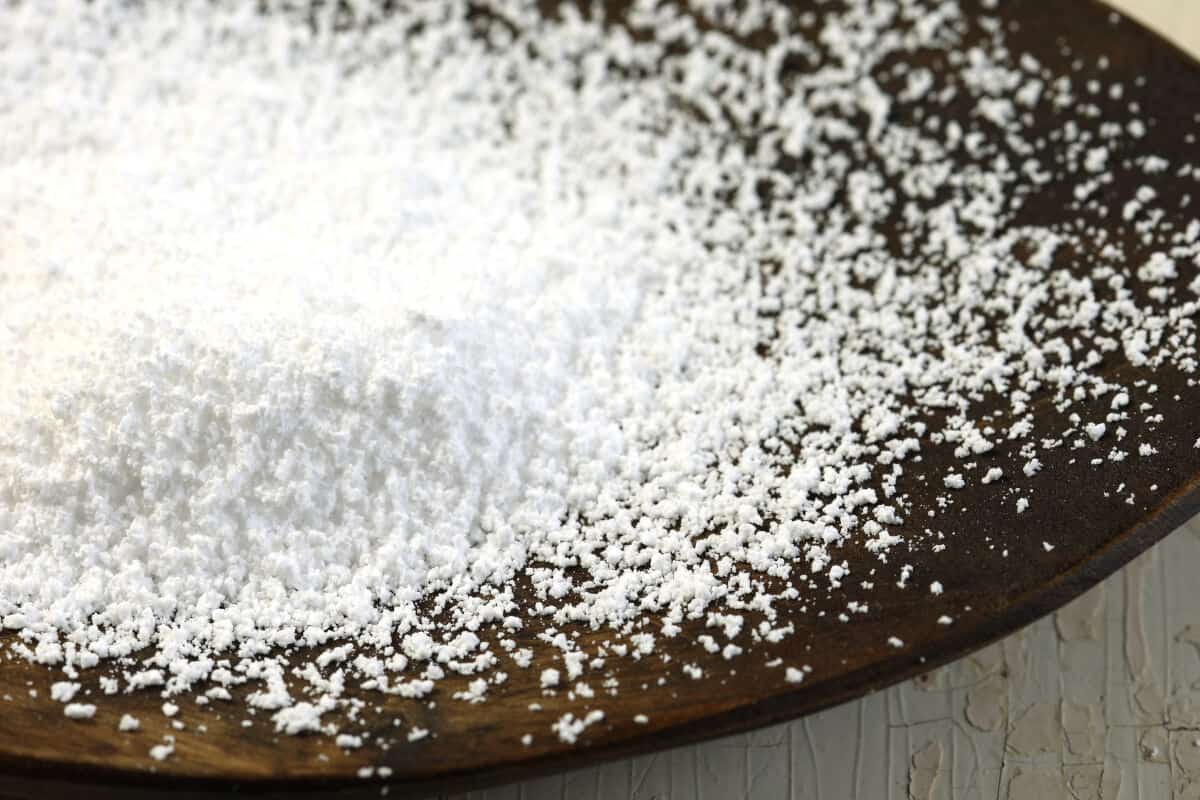
Fruit sugar features a similar size to granulated sugar but with finer, more uniform crystals; it’s clear and particularly shiny.
Origins and Composition: White cane or beet sugar ground very fine.
Flavor and Uses: Exactly the same as white granulated sugar in flavor, but with much smaller crystals, it’s ideal for stirring into pudding mixes and gelatin. It gets its name because it’s often used for sprinkling on fruit for making preserves. Other names include instant dissolving and ultra-fine.
Don’t confuse this with sugar products extracted from fruit or the sugar that occurs naturally in all fruits.
Cane Sugar
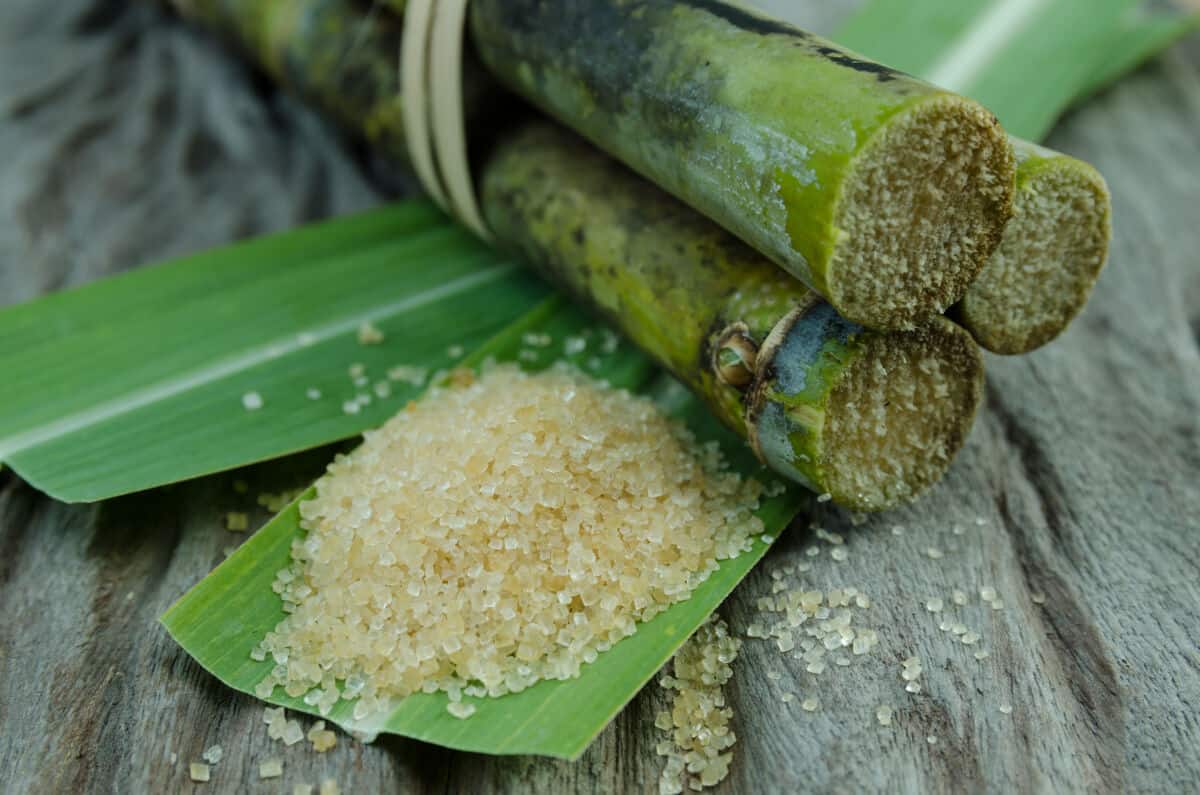
Cane sugar varies in size from fine to regular granulated sugar; typically off-white to light golden, reflecting its less processed nature.
Origins and Composition: Extracted from sugar cane plants. Can be turned into any kind of sugar.
Flavor and Uses: Most commercial sugars are cane sugar, whether they’re white or brown. There is a public perception that it is healthier and more desirable than beet sugars, so many brands call out their sugar is cane sugar, even though it’s not really a significant point of difference.
Bakers Sugar/Caster Sugar
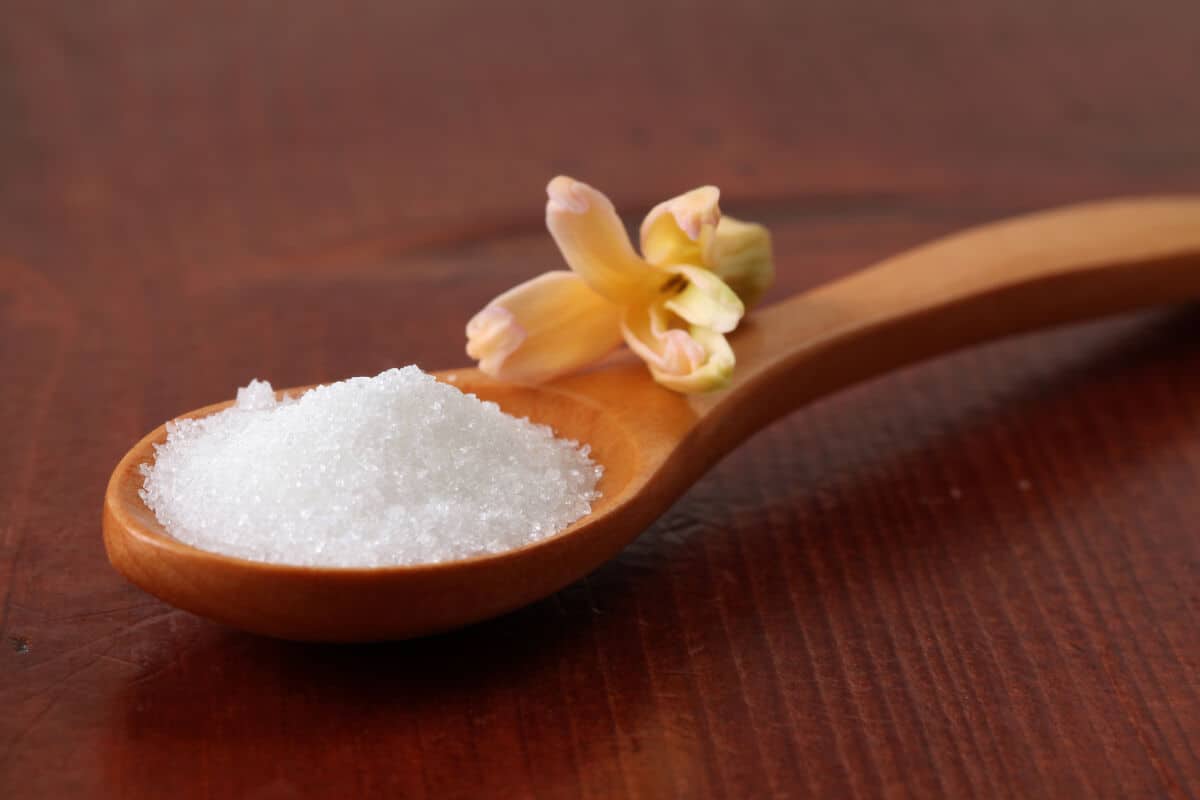
Bakers sugar, or caster sugar, is finer than granulated sugar but not as powdery as confectioners sugar; it appears as tiny, sparkling crystals that dissolve quickly.
Origins and Composition: White cane or beet sugar reduced to smaller crystals.
Flavor and Uses: Once again, this is just white sugar, so the flavor is no different. What sets it apart is the tiny crystals. Pro bakers favor this sugar for being light and easy to dissolve in egg whites. As such, it’s commonly used in delicate confections like meringue and Angel food cake. You may also see it sold as superfine sugar.
Coarse Sugar
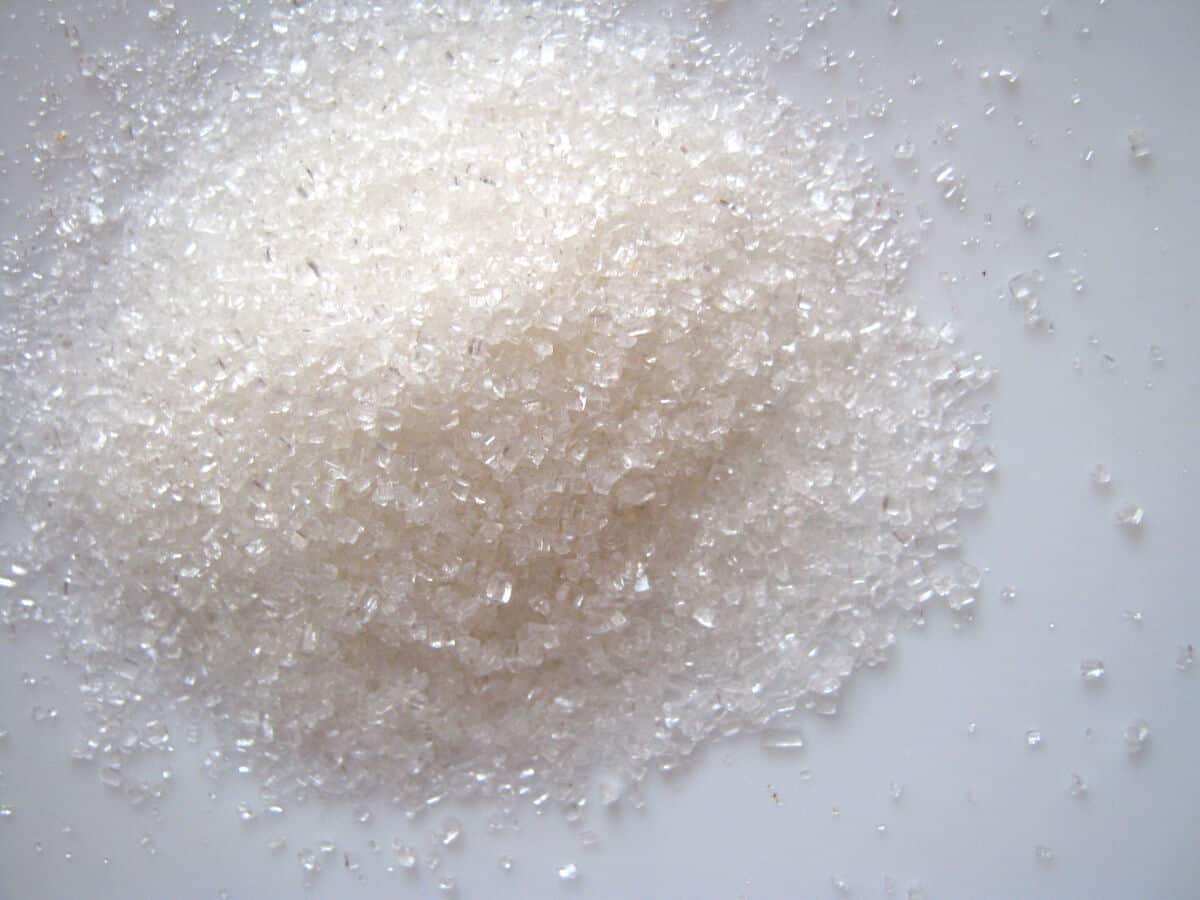
Coarse sugar has noticeably larger crystals than granulated sugar; these chunky crystals are clear and have a bright, sparkly appearance.
Origins and Composition: White cane or beet sugar, but with large crystals.
Flavor and Uses: Has the same flavor as regular granulated white sugar, but doesn’t dissolve or melt as easily. For that reason, it’s usually reserved for decorating the tops of baked goods. You can purchase coarse sugar in a rainbow of colors or tint it yourself with food coloring.
Sanding Sugar
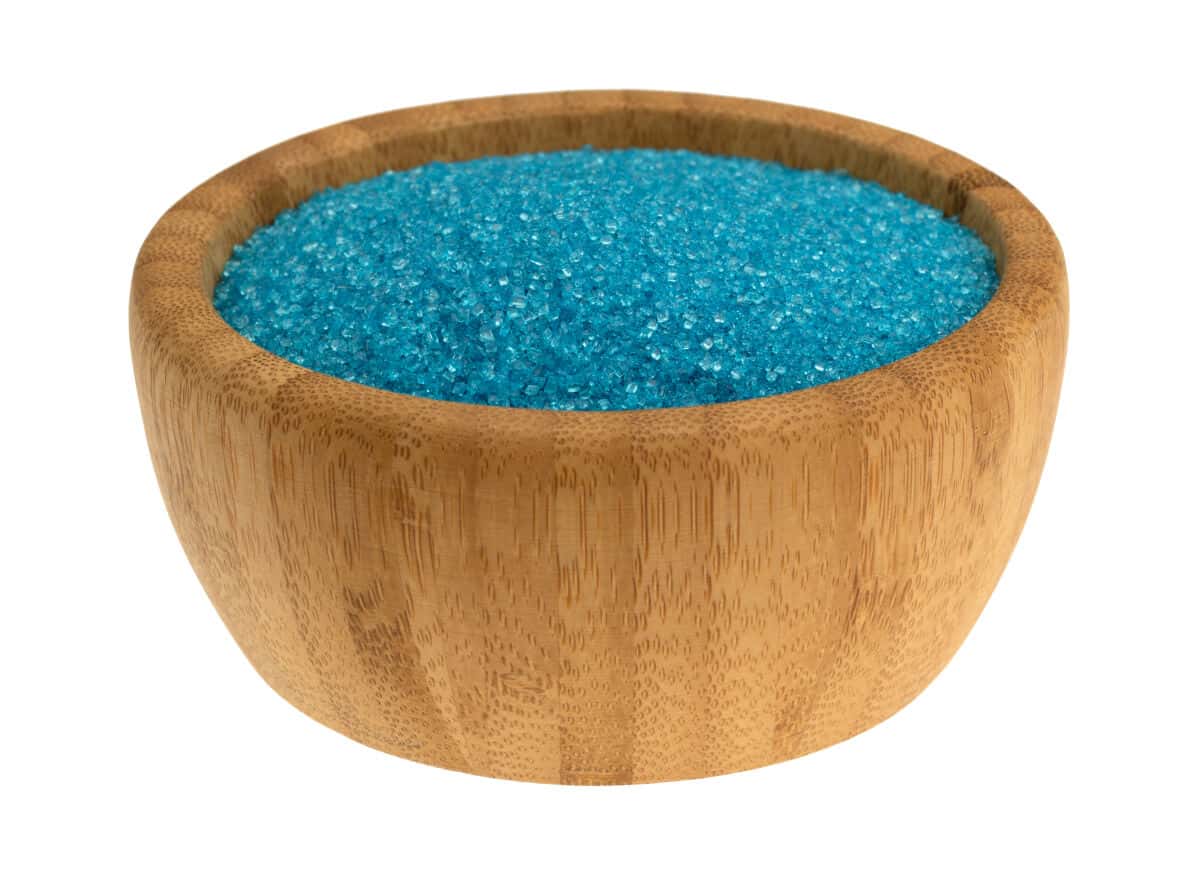
Sanding sugar has a large crystal size, often colored; these crystals are very sparkly and are used for their decorative shimmer.
Origins and Composition: White cane or beet sugar, with larger crystals than regular granulated but smaller than coarse.
Flavor and Uses: Same flavor as all white sugars, but not easily dissolved or melted. Another decorating sugar, it’s ideal for using on cookies as it’s not as crunchy for small teeth as coarse sugar. It comes in many colors from baking supply stores, or you can color your own.
Light Brown Sugar/Golden Sugar/Golden Yellow Sugar
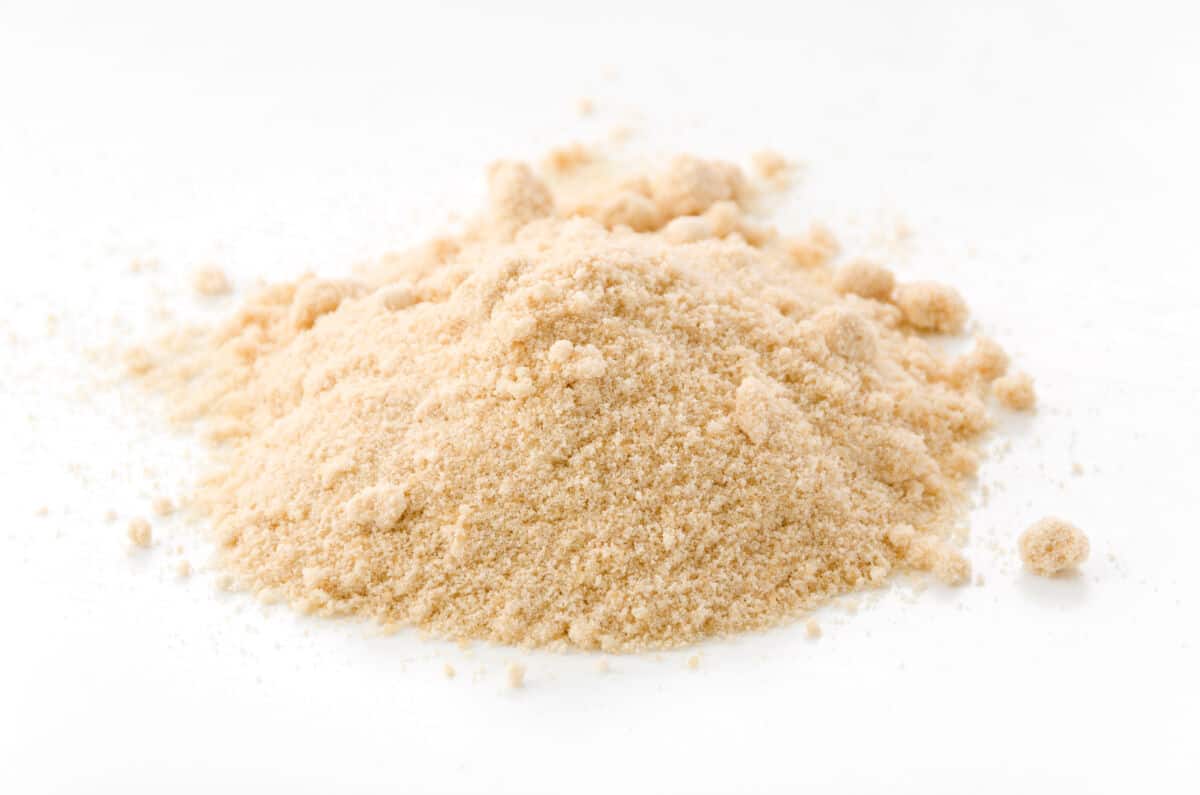
Light brown sugar, also known as golden sugar, has small, soft, and moist crystals; it’s light brown and clumpy due to the molasses content.
Origins and Composition: Cane or beet sugar boiled and crystallized from brown sugar syrup, or white sugar spun with some molasses extracted during processing. Lightly moist and fluffy in texture. Brown beet sugar uses molasses from sugar cane refining.
Flavor and Uses: Richer than white sugars but still light, light brown or golden sugars have subtle undertones of caramel. They add moisture and color along with rich sweetness to baked goods like cookies and cupcakes. Barbecuers love it as a base for sweetening BBQ sauces, especially tangy mustard sauces. Its moisture helps it adhere to meats, so it’s a good choice for sweet dry rubs.
Dark Brown Sugar
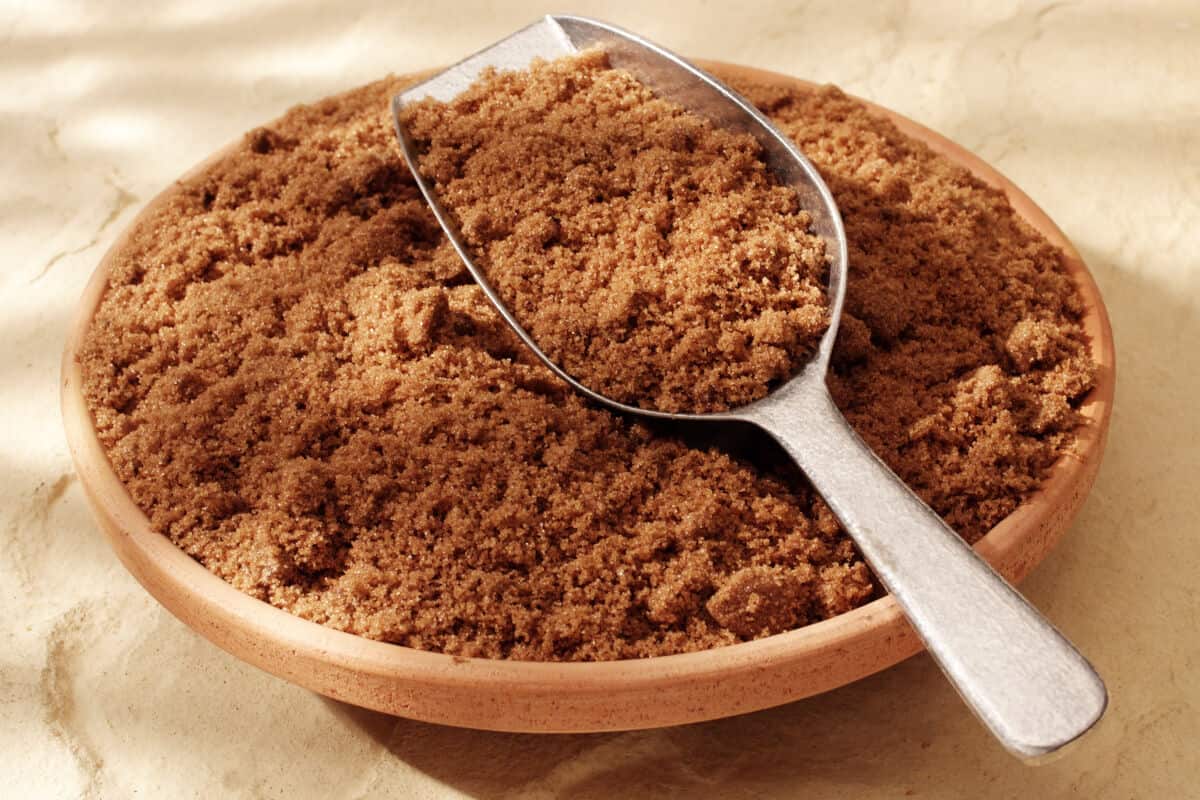
Dark brown sugar is similar in texture to light brown sugar but with a deeper, darker brown color, indicating more molasses.
Origins and Composition: Cane or beet sugar boiled and crystallized from brown sugar syrup or white sugar, spun with some of the molasses extracted during processing.
Flavor and Uses: There’s more molasses in Dark Brown than Light/Golden, so it has a more pronounced caramel flavor and a moister texture, and it tends to clump. Bakers choose it for decadent desserts, pie fillings, and more. For the griller, Dark Brown is exceptional for rubs and sauces, adding deeper color and flavor.
Turbinado Sugar
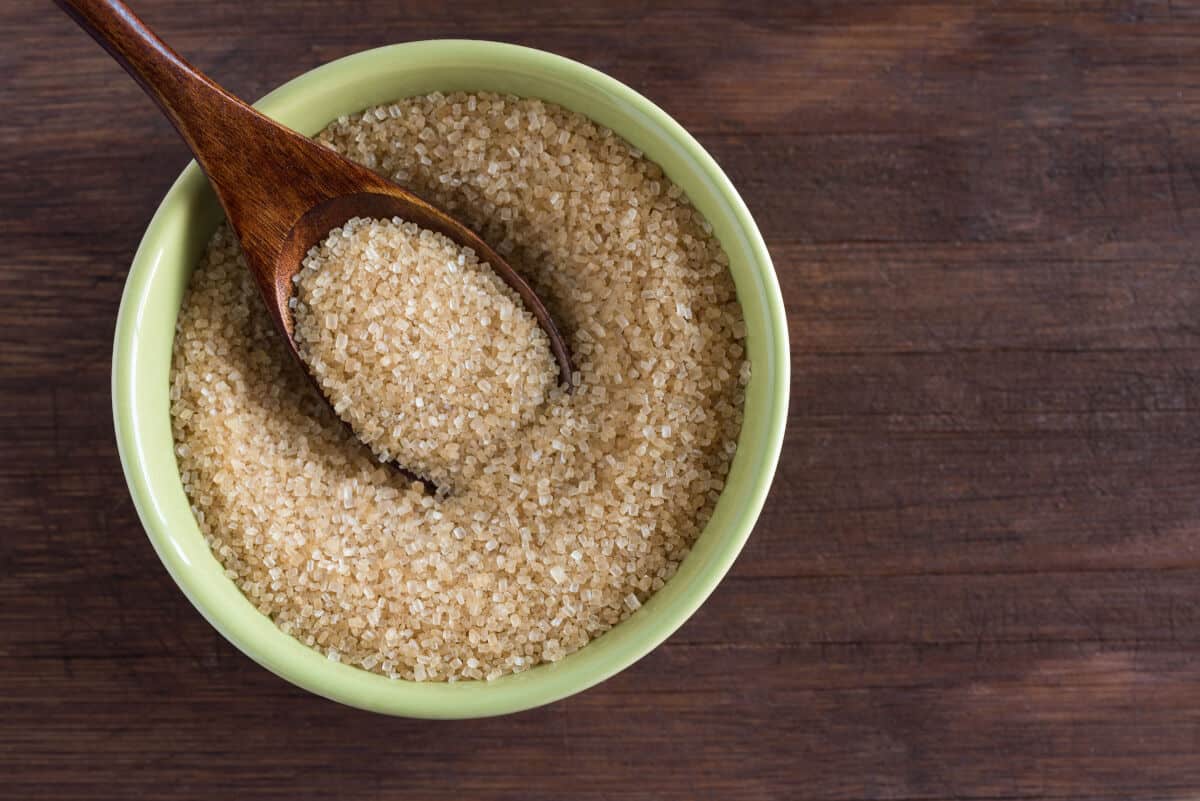
Turbinado sugar has large, dry, and slightly sandy crystals; it’s pale brown, with a natural, unrefined appearance.
Origins and Composition: This less-refined sugar is made from the first pressing of sugar cane which is then boiled just once. The resulting crystals are large and, because not all the molasses is spun out, they’re a golden brown color.
Flavor and Uses: Turbinado will not melt as easily as other sugars, so it’s not generally used for baking. Typically, it’s a finishing sugar for adding a sweet, rich, crunchy topping to baked goods. It will melt in hot drinks, so it’s excellent for tea and coffee. Many people consider turbinado —also known as raw sugar— to be healthier than white sugar because it’s less refined.
Muscovado Sugar
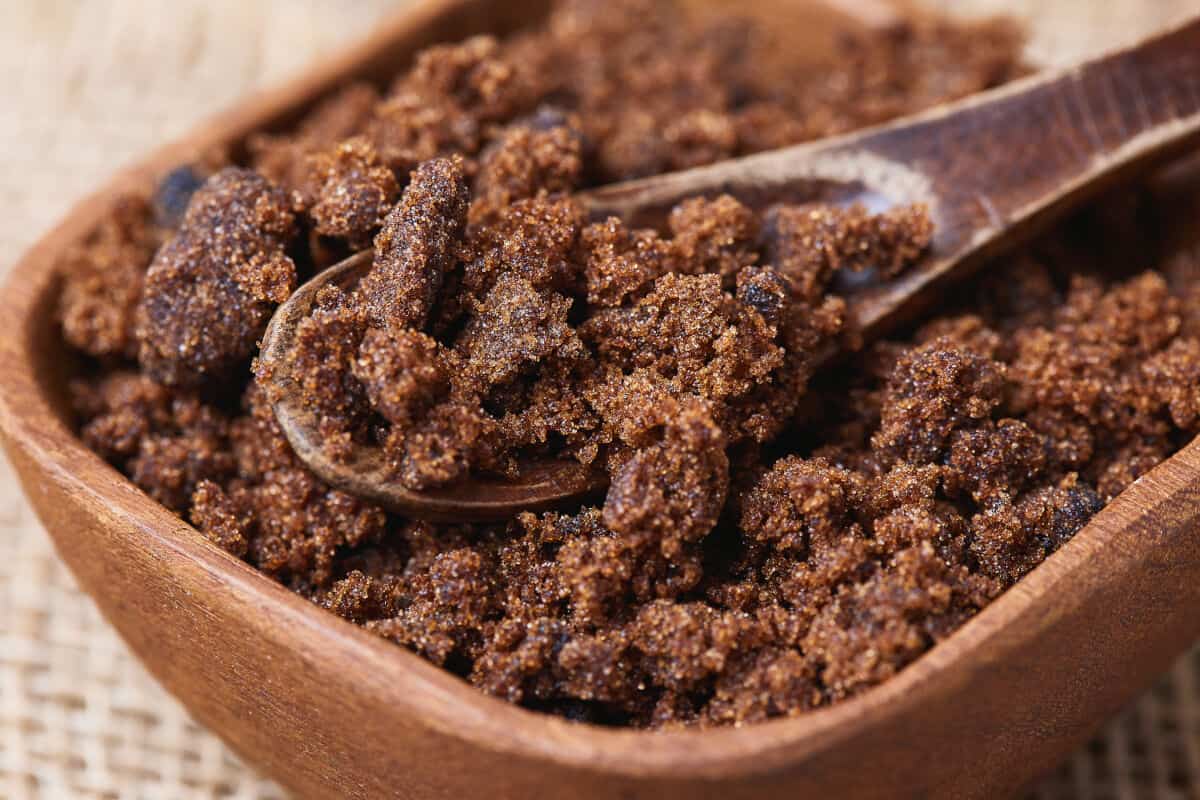
Muscovado sugar is very moist, sticky, and clumpy; it’s dark brown, almost black, with a rich molasses sheen.
Origins and Composition: Partially refined cane sugar that retains much of its natural molasses. Muscovado sugar is very moist, even tacky, and granular. India is the top producer of this kind of sugar, though Mauritius is known for making some of the world’s very best.
Flavor and Uses: This extra-rich sugar isn’t well-known in the Western world yet, though it’s catching on with health-conscious consumers looking for a less refined, more nutrient-dense sugar. It’s exceptional for all things chocolate or savory glazes and sauces.
Demerara Sugar
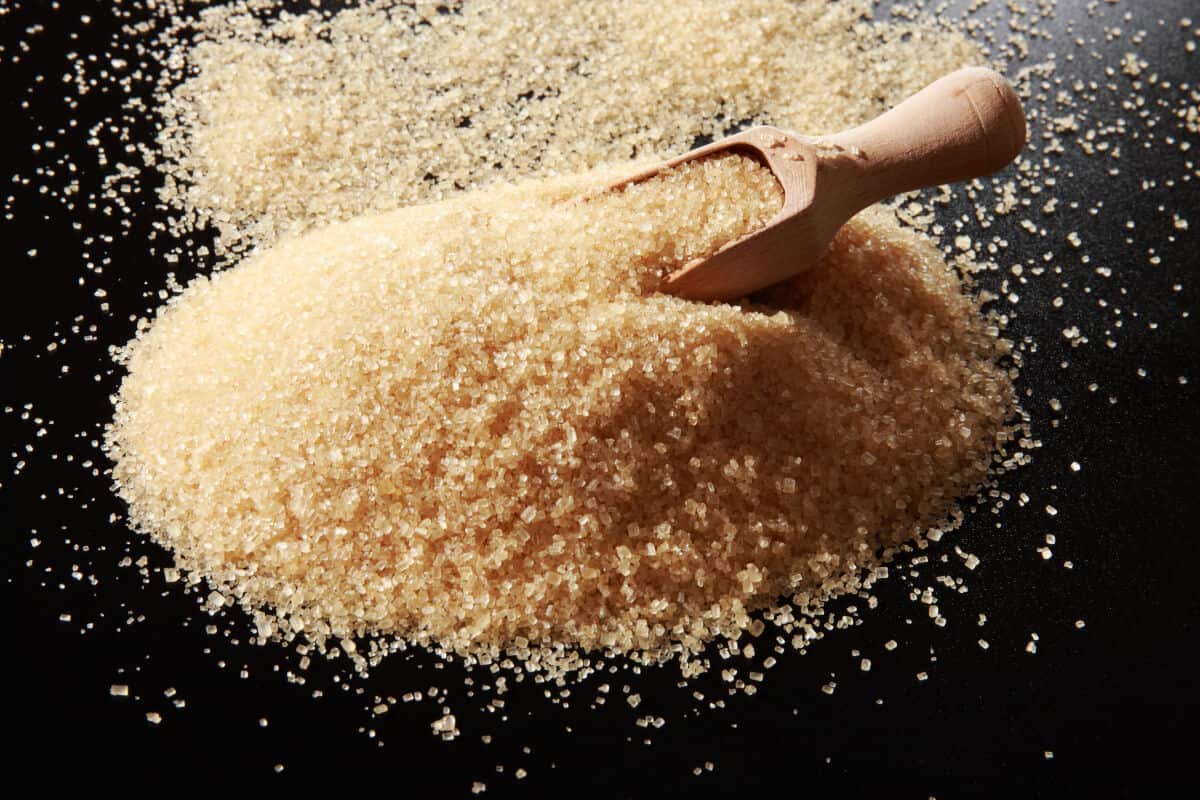
Demerara sugar has large, crunchy crystals, slightly sticky; it’s golden brown and sparkly, often used as a topping.
Origins and Composition: Another so-called “raw” sugar, Demerara is a moist, small-grain sugar made from cane with higher molasses content than Dark Brown and Golden sugars. Originally produced in Guyana, which was known as Demerara until 1831.
Flavor and Uses: One of the richest brown sugars available, it’s excellent for anything into which you want to impart a deeper flavor. Use for baking, sweetening drinks, or sauces and rubs for exceptional flavor and color. Also makes a decadent rimmer for dark rum— or bourbon-based cocktails.
Granulated Brown Sugar
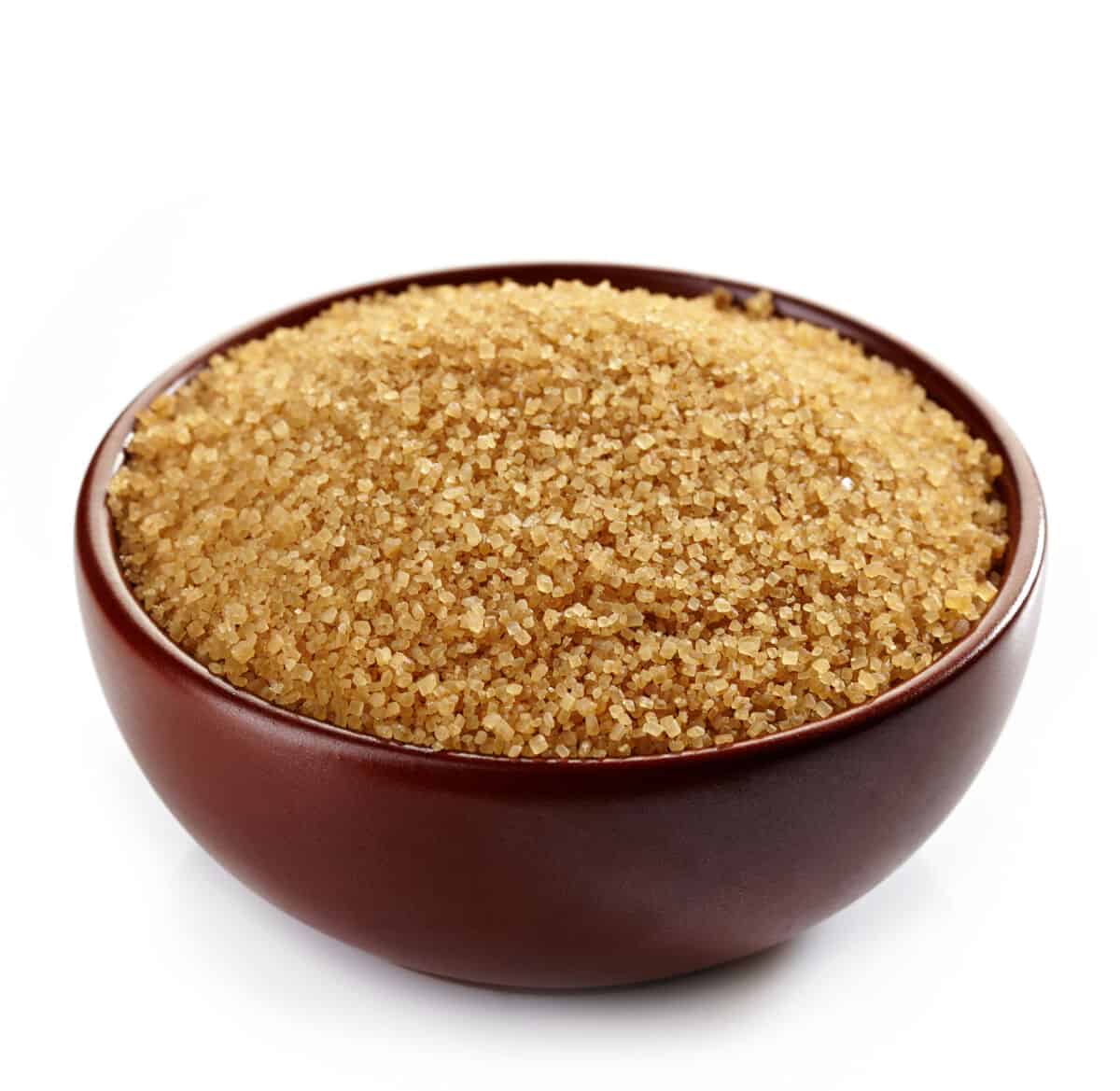
Granulated brown sugar is similar in size to regular granulated sugar but with a light brown color and a slightly moist texture due to the molasses content.
Origins and Composition: Nearly identical in texture to granulated white sugar but retaining the molasses-infused color and flavor of traditional brown sugars. One manufacturer in the US formerly called it “Brownulated,” but wisely stopped a few years ago.
Flavor and Uses: Tastes like light brown sugar, but without the moisture. You can swap it out 1:1 with white sugar in recipes, but if you substitute it for traditional browns, you’ll need to add something for moisture, or the results will be much drier than expected. Won’t stick to meat as easily in rubs, either, but will caramelize nicely in sauces.
Sugar Syrup — Simple Syrup
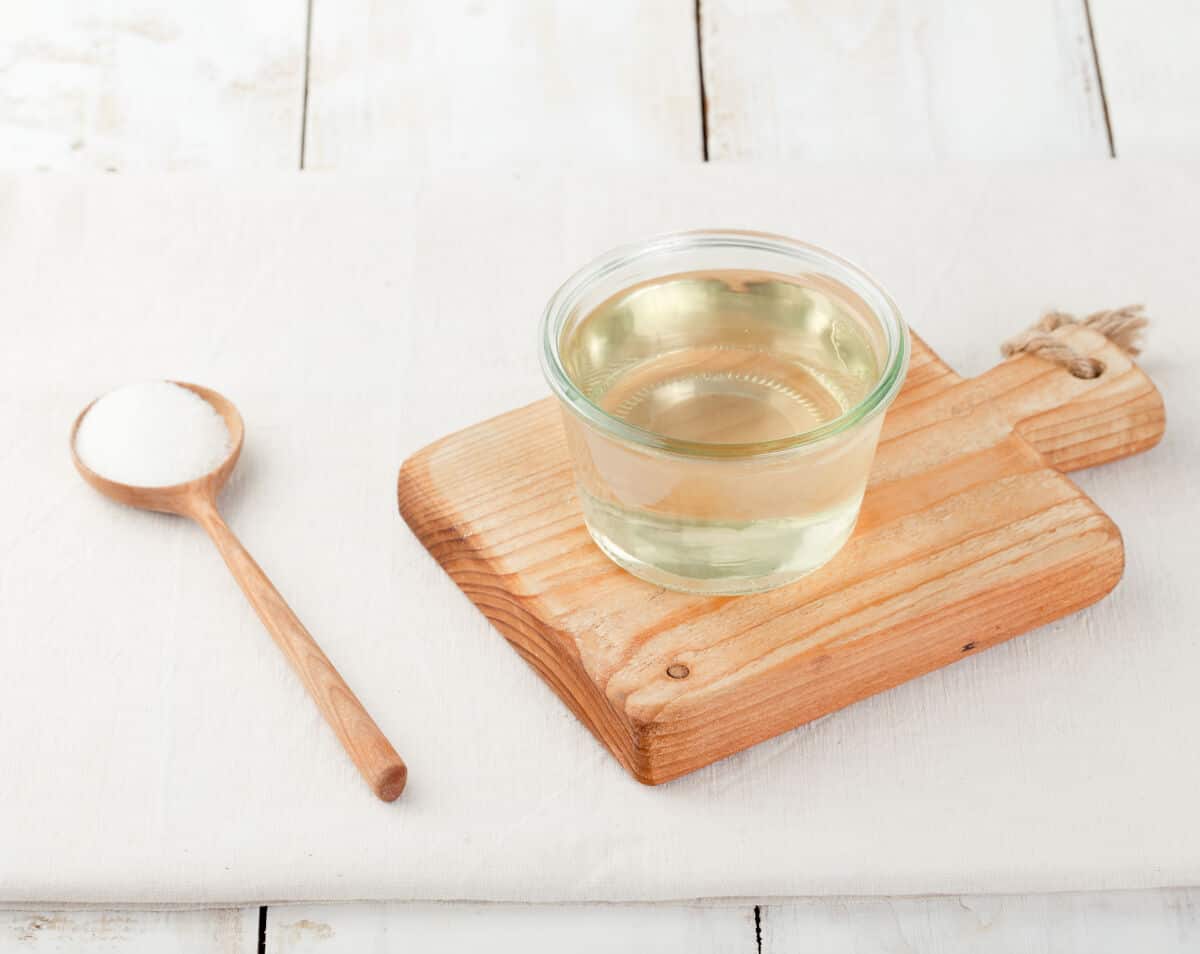
Sugar syrup, also known as simple syrup, is a clear, viscous liquid that lacks the granular texture of solid sugars and has a smooth, syrupy consistency.
Origins and Composition: Water and melted sugar, usually in a ratio around 1 part sugar to 4–5 parts water. You can buy pre-made simple syrup from the grocery store, or you can make it at home. Some premium commercial products use organic sugar, or add in seasoning and other ingredients, such as maple syrup.
Flavor and Uses: The flavor depends on the type of sugar melted down for the syrup and what else is added. The most common use is for sweetening cocktails and cold drinks — it’s nearly impossible to get sugar to dissolve in a liquid that isn’t hot. You can also use it for a topping or an easy base for a marinade or glaze.
Invert Sugar
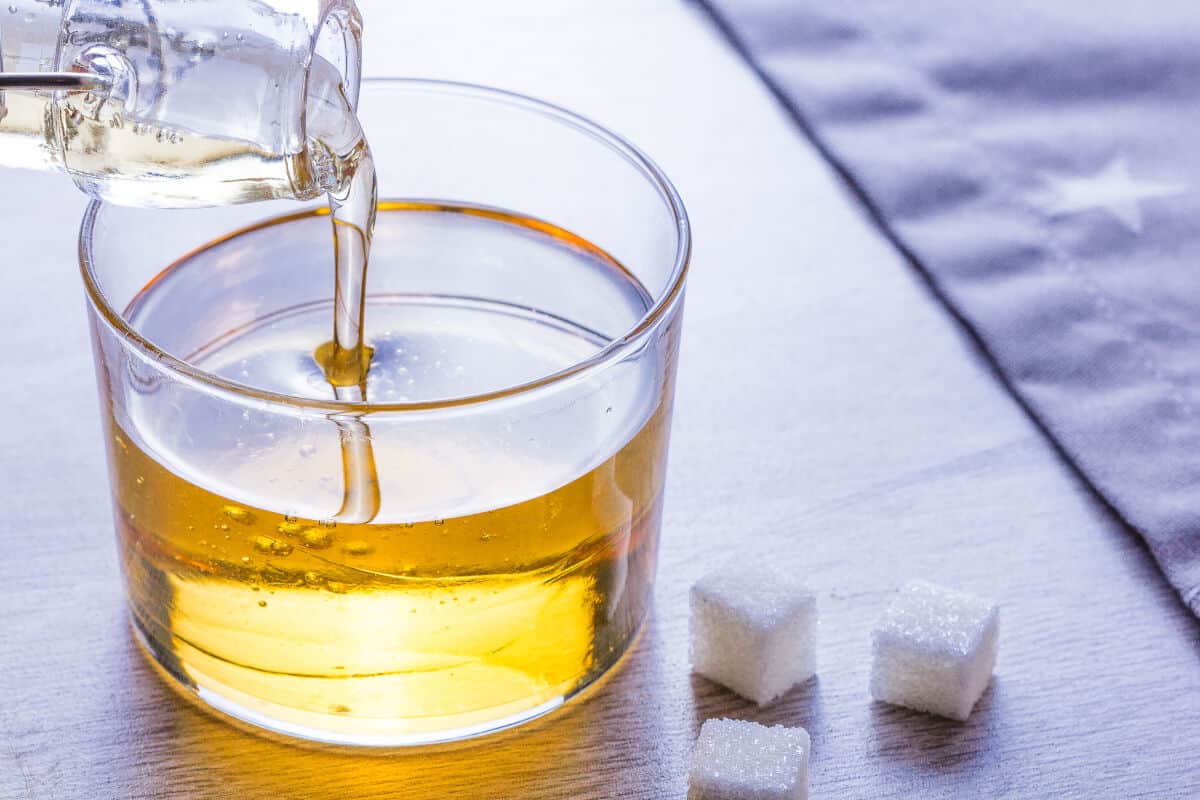
Invert sugar is typically a thick, syrupy liquid, clear to pale yellow in color, and is sweeter and more hygroscopic (moisture-retaining) than regular sugar.
Origins and Composition: A liquid solution of glucose and fructose, the two sugar molecules that make up sucrose. They are chemically separated via hydrolysis so that the glucose and fructose are free-floating in the solution.
Flavor and Uses: You’ll find invert sugar used as a sweetener in many products. It’s very similar to Simple Syrup in that it easily mixes into cool or room temperature liquids, adding sweetness but little flavor. Use it for cocktails and cold drinks, marinades, sauces, and glazes.
Sugars We Recommend Every Chef Stock and Why
We certainly don’t expect you to stock up on every sugar on our list. But, here are a chosen few you should always have on hand for grilling, cooking, baking, and other uses.
Dark Brown Sugar
No budding pit boss should be without this moist, rich sugar. Dark brown sugar is the perfect base for creating succulent barbecue sauces and dry rubs for deep flavor and gorgeous caramelization. You can also use it for any kind of baking or as a topping for oatmeal and cereal.
White Granulated Sugar
White granulated sugar is the workhorse of the sugar family, and you probably already have it in your home. From mixing powdered drinks and gelatin to sweetening coffee and tea to every kind of baking, it’s hard to go a day without using this stuff. It’s not our choice for BBQ applications, though, since it lacks the moisture of browns and won’t caramelize nicely.
Demerara Sugar
Demerara sugar is the stuff you use when you want to bring your mop sauce up a notch. It’s as easy to work with as dark brown sugar but with an even richer flavor. Muscovado is even better, but it’s not easy to get your hands on, making this the logical substitution.
Simple Syrup
For faster glaze and marinade prep, simple syrup is the way. If you fancy yourself a mixologist, keep some handy for exceptional cocktails. Definitely try various blends for different flavor experiences, and for sure, try making your own.
Sugar Substitutions
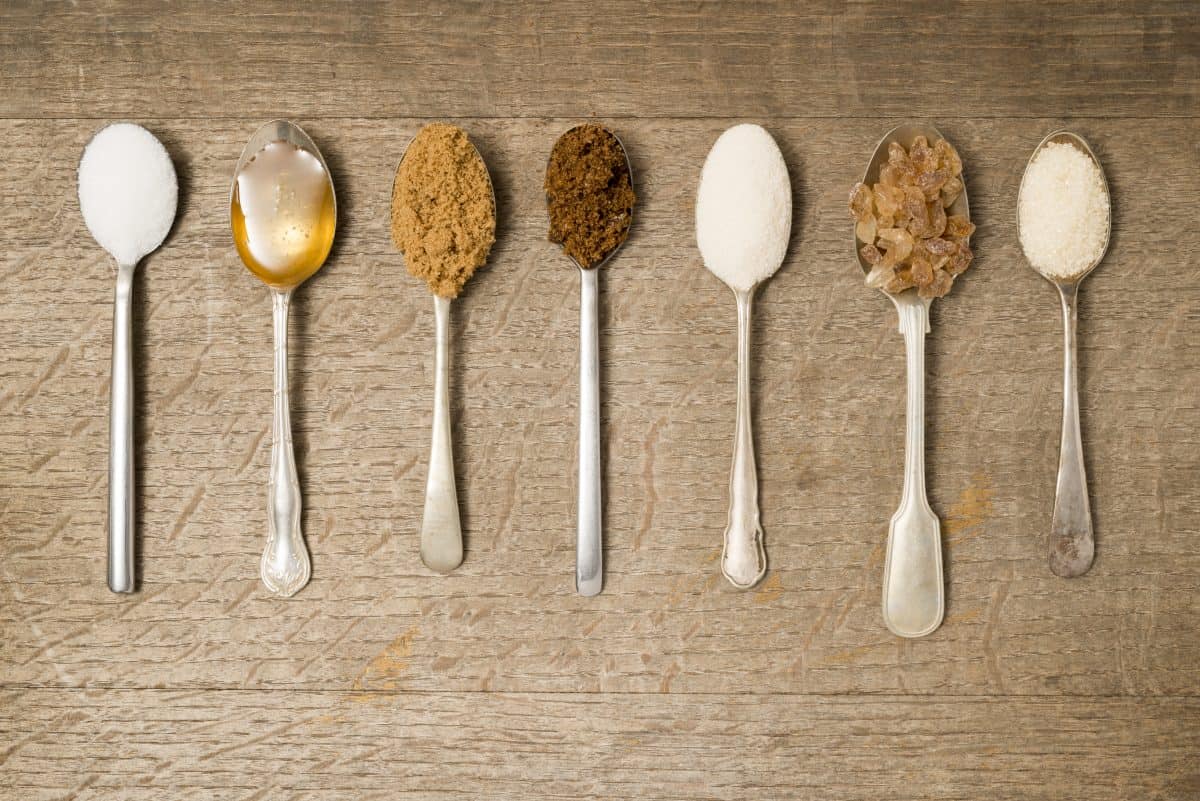
Haven’t got the sugar your recipe calls for? Here are some workarounds by substituting in other sugars you might already have in the pantry.
You Can Substitute Any Brown Sugar for White Sugar
You can substitute any brown sugar for any white sugar. So if a recipe calls for granulated white sugar, you can use brown sugar (Dark, Golden, or Demerara) instead.
There will be differences, though, including (possibly) notes of butterscotch or caramel, darker color, and extra moisture. For baking, this works in reverse, too, though you will note the absence of caramel flavor, dark color, and moisture using white instead of brown.
You Can Substitute Dark Brown Sugar for Demerara or Muscovado
These dark sugars have similar flavor profiles thanks to the extra molasses either retained or mixed back in. Expect subtle differences as you go up or down in molasses content, with Muscovado at the top of the scale and Dark Brown at the bottom. They’re all moist, too, so you won’t notice much difference in your final product.
You Can Substitute White Granulated Sugar for Powdered Sugar
Don’t have powdered sugar for that finishing touch? Put one cup of white granulated sugar and one tablespoon of cornstarch in a blender or food processor and chop it up until it’s fine and fluffy. It’s a good substitute texturally, and the flavor is identical.
Want to do the opposite? You can replace granulated sugar with powdered sugar, but not 1:1. Instead, use 1.75 cups of powdered for every 1 cup of granulated required.
You Can Substitute Turbinado for Brown Sugar
It’s not the best for baking, but you can use the coarser Turbinado in place of any brown sugar, especially Demerara and Dark Brown, in a pinch. Turbinado lacks that lovely moisture, though, so you’ll want to add in something like applesauce or syrup to get the same texture in your finished product.
You Can Substitute Turbinado for Granulated Brown Sugar
Want a free-flowing brown sugar that dissolves in just about any liquid? Grind down the large crystals of Turbinado in a food processor or blender (or even a pepper mill or coffee grinder) to make, essentially, your own Granulated Brown.
Make Your Own Brown Sugar
As discussed earlier, brown sugars are white sugars with molasses, a natural by-product of sugar refining, added back in. It stands to reason, then, that you can make your own brown sugar by mixing molasses with granulated white sugar. The more molasses you add, the more moist and rich the sugar becomes.
Add 1 tablespoon of molasses to a cup of white sugar to approximate Light or Golden Sugar, or 2 tablespoons for Dark Brown.
Final Thoughts
We hope this article has helped you make sense of the surprisingly wide range of different types of sugars available. Experimenting with different varieties is a fun and easy way to shake up your barbecue and kitchen routines and discover exciting new flavors.
Thanks for sweetening your day with us. Check us out for more mystery-solving articles, in-depth reviews, mouth-watering recipes and other hyphenated goodies. Then, go use your knowledge to make the world a tastier place.



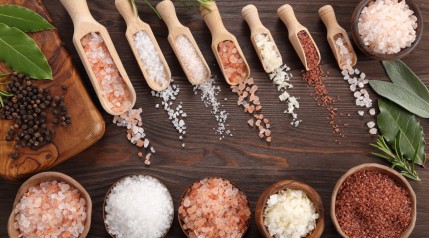
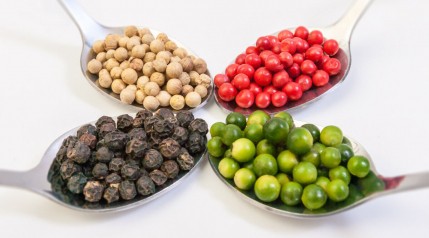
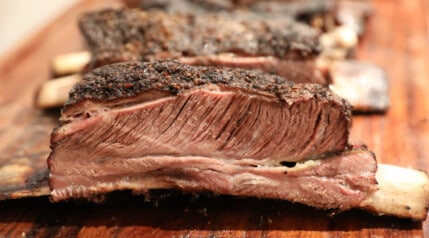
Soooo very comprehensive! Thank you, for going to all the trouble of creating this page on sugars! Truly brilliant and definitely appreciated!
Thanks, Dorothy.
Very informative article. I grew up in sugar cane country(Louisiana) but have spent most of my adult life in Maine. I produce maple 🍁 syrup and find that it is much more flavorful than cane sugar. Some large producers actually make maple sugar for sale. While more costly than cane sugar, maple sugar is very tasty. Would like to know your thoughts about it. Thanks
I’ve used maple syrup and love it, but have not seen ‘maple sugar’ personally, so cannot comment. It sounds good to me though and I’ll make sure to source and try some.